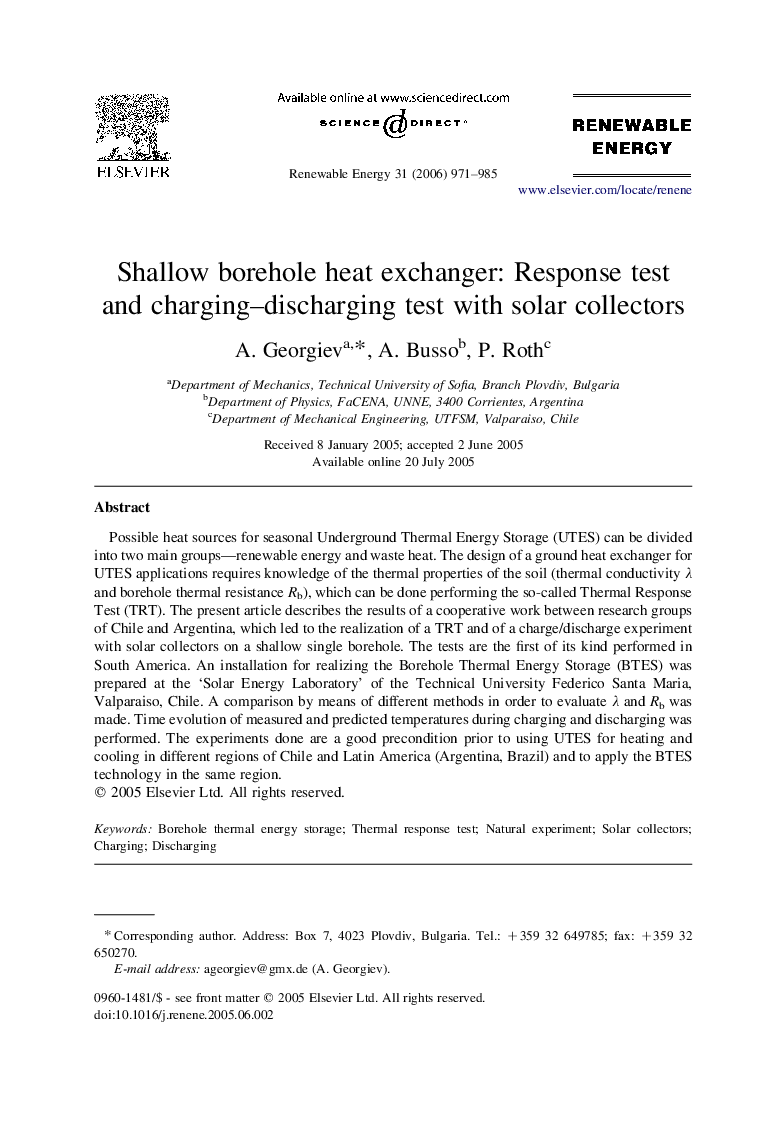| Article ID | Journal | Published Year | Pages | File Type |
|---|---|---|---|---|
| 303153 | Renewable Energy | 2006 | 15 Pages |
Possible heat sources for seasonal Underground Thermal Energy Storage (UTES) can be divided into two main groups—renewable energy and waste heat. The design of a ground heat exchanger for UTES applications requires knowledge of the thermal properties of the soil (thermal conductivity λ and borehole thermal resistance Rb), which can be done performing the so-called Thermal Response Test (TRT). The present article describes the results of a cooperative work between research groups of Chile and Argentina, which led to the realization of a TRT and of a charge/discharge experiment with solar collectors on a shallow single borehole. The tests are the first of its kind performed in South America. An installation for realizing the Borehole Thermal Energy Storage (BTES) was prepared at the ‘Solar Energy Laboratory’ of the Technical University Federico Santa Maria, Valparaiso, Chile. A comparison by means of different methods in order to evaluate λ and Rb was made. Time evolution of measured and predicted temperatures during charging and discharging was performed. The experiments done are a good precondition prior to using UTES for heating and cooling in different regions of Chile and Latin America (Argentina, Brazil) and to apply the BTES technology in the same region.
